Milking cows, tending the chickens, loving the freedom we children had to play and roam at will — and centering family life around our large kitchen table are some of my fondest memories of my childhood on a North Dakota farm.
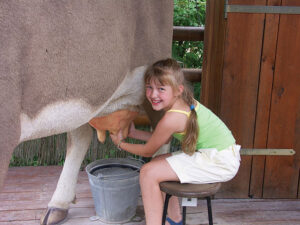 Both of my parents did the milking duty, but more often than not I was there with my mother. Actually, because we children were very close in age, all three of us were there with her. She taught us how to sit on the milk stool and milk the cows. This was all done by hand, no milk machines here. (This is an online portrayal of my milking days).
Both of my parents did the milking duty, but more often than not I was there with my mother. Actually, because we children were very close in age, all three of us were there with her. She taught us how to sit on the milk stool and milk the cows. This was all done by hand, no milk machines here. (This is an online portrayal of my milking days).
The milk cows were part of farm life until I was about 8-9 years old. At that time, my parents decided to sell the cows and buy our milk and cream from a local farmer or from the local grocery store. I’m sure this was an agonizing decision because this twice-a-day routine had been the only way of survival for both of my parents from the beginning of their lives.
My dad was becoming a more prosperous operator of the farm and wanted the freedom of no more milking duties twice a day. It was also seen as making progress. Now he could devote all his energy to growing crops: wheat, barley, oats, and flax. The added bonus was that they did not have to be home in the evening in time to milk the cows.
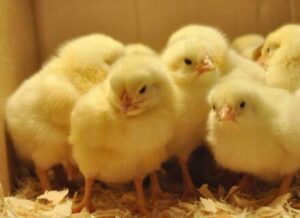 Then there were the chickens and the chicken coops. My mother was the sole manager of this part of the farm. In the spring she would cart home in big shallow boxes dozens of baby chicks. They were housed in several small chicken coops on the farmstead. At first they would be kept warm with light bulbs to provide heat, but they grew quickly and soon we had eggs to pick, collect, or gather — depending on how your family or part of the country described this process. Oh, what an awful job. It smelled terrible and you had to be so careful about where you put your feet. There was chicken poop everywhere. The chicken operation ended a few years after the cows were sold.
Then there were the chickens and the chicken coops. My mother was the sole manager of this part of the farm. In the spring she would cart home in big shallow boxes dozens of baby chicks. They were housed in several small chicken coops on the farmstead. At first they would be kept warm with light bulbs to provide heat, but they grew quickly and soon we had eggs to pick, collect, or gather — depending on how your family or part of the country described this process. Oh, what an awful job. It smelled terrible and you had to be so careful about where you put your feet. There was chicken poop everywhere. The chicken operation ended a few years after the cows were sold.
Now the little buildings that had housed the chickens were empty. What an opportunity they presented for my sister Karen and me! You see, we converted them into little play houses during the summer months. I’m sure my mother must have suggested this use because it kept us busy for many days scrubbing and trying to eliminate the odor in these little buildings. After much hard work, we had private retreats of our own. The process would have to start over every spring because the odor could never be eliminated. We did outgrow the fascination with chicken coops when we left childhood behind.
I loved the freedom of being a child on a farm. During the summer, we could be away from the house and not check in with our mother for hours.
One summer a new family arrived in our world: my dad’s childhood friend who was now married with three children, and who had been working for a newspaper in California. Suddenly, he and the family arrived back home in North Dakota to live in his hometown near us. I never knew all the adult reasons for this sudden and unexpected change, except that the father had lost his job. My dad gave him work on the farm. The family needed to restart their lives.
The good news for us children was that the three children in this family were nearly the same ages (7-11 years old) as we were and were great playmates. They had been living in a city and were enthralled with the freedom of the farm.
The oldest child, a girl named Sandra, had a gregarious personality and a terrific imagination. She had us believing that a wide area of black dirt that formed a division between groves of trees was the great Amazon River and we could swim across it. We loved having her come for visits and lead us on wild adventures that she concocted. The adults also had great times together. After two years or so, the dad found a job in Kalispell, Montana, and the family left us behind.
Another childhood memory on our North Dakota farm is the farm kitchen, the center of life for all of us. Large windows above the kitchen sink allowed my parents to view the farmyard spread out before them. A large rectangular table dominated the center of the room. The table was a center for eating, learning table etiquette, welcoming guests, and studying our lessons.
Much cooking was conducted in this kitchen. It was the beginning of my dietetics training which culminated in 33 years as a dietitian at Mayo Clinic in Rochester, Minnesota. We joined the newly-formed 4-H club and learned the basics of cooking, sewing, cleaning, food handling and preservation.
Important lessons in welcoming friends and visitors were learned in the kitchen. My parents were like many other rural North Dakota people: no person was a stranger. If someone arrived in the farmyard, they were welcomed and invited for a meal, coffee and cookies, or sandwiches and sweets. If a snowstorm came up suddenly, a traveling salesman might be invited to spend the night. But most of all, friends and extended family gathered around the table countless times for abundant meals and lively conversation. My mother was never at a loss for words and all who visited felt the warmth of hospitality from both of my parents.
These are some of my memories of my childhood on this North Dakota farm, a few hundred-acres-turned-into-thousands on the windswept Dakota plains.
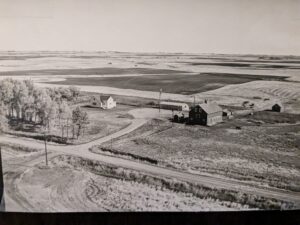
Copyright © 2024 by Jean Mortenson
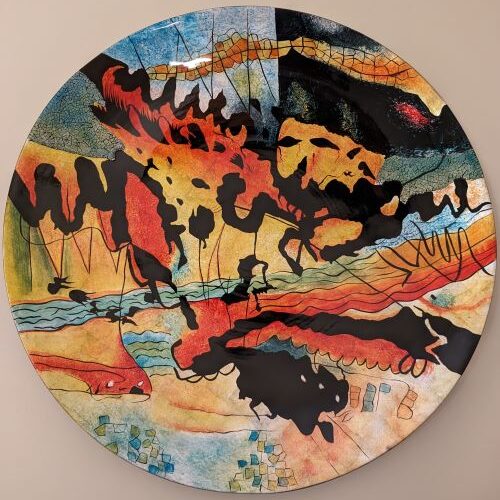
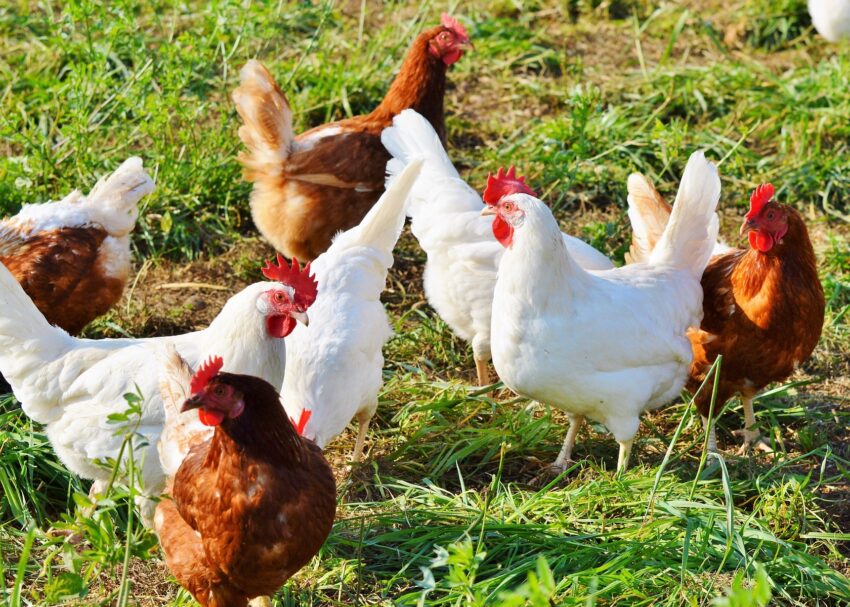
Jean, What a delightful story! Growing up on a farm gave you endless enchanting play and chore activities. Reading this reminded me of the stories my dad would tell me of visiting his grandmother’s farm. There are so many common moments for farm kids. It would be fun listening in on a group of grown-up farm kids telling about their escapades.
Much appreciated, Jean. Born in Grand Forks and educated at UND, I can confirm that North Dakota is more than frozen tundra.